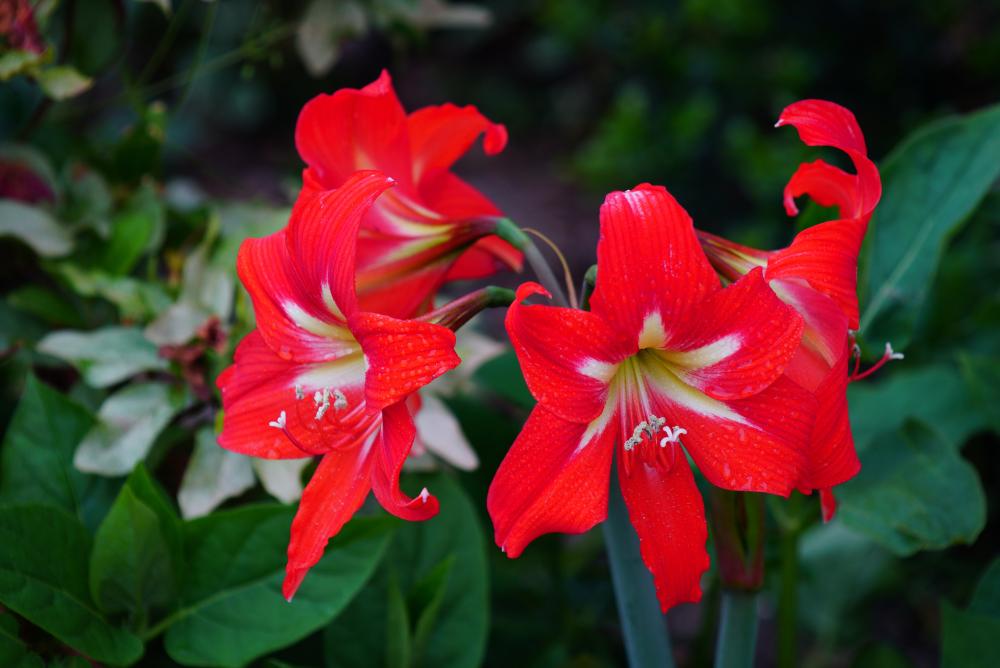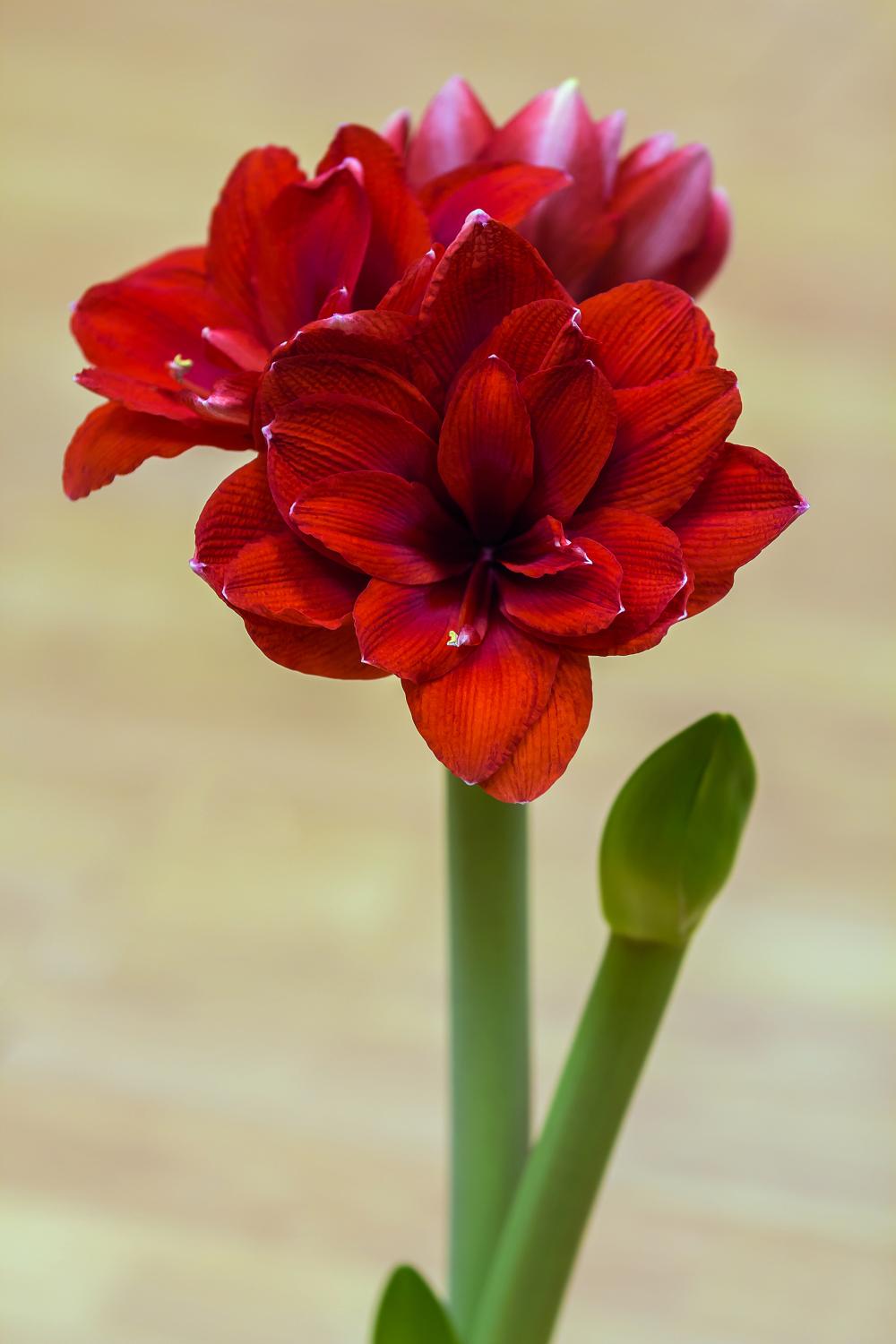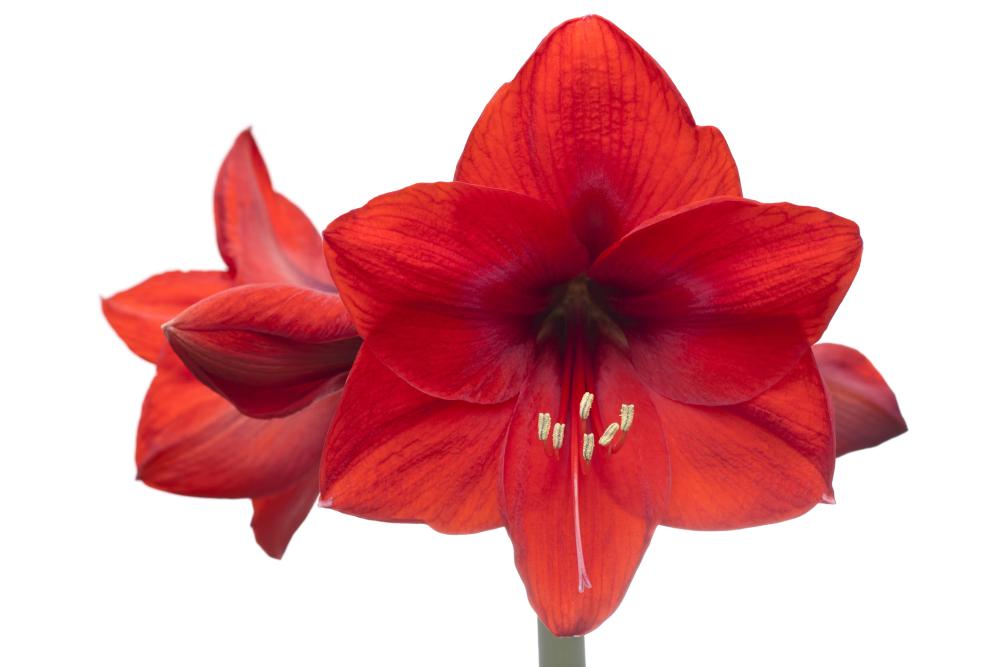Amaryllis Varieties That You Can Grow In Your Home
When it comes to amaryllis varieties, you’re spoiled for choices. There are so many varieties of this delightful flower, you could spend a good portion of your gardening time just mixing and matching amaryllis varieties alone. And just when you think that you got the perfect pairing and your amaryllis patch couldn’t get any better, along comes a new type that you just have to add to the patch. And that requires rethinking your whole designing plans and finding new ways to present the showy flowers with their delightful colors.
Does this mean that growing amaryllis is a consuming passion? One that you could spend a lifetime trying to perfect? That’s precisely what it means. And the following article gets you started on your amaryllis journey and lists the top amaryllis varieties to grow in your garden.
Cherry Nymph
It’s not very often that you come across a plant that has such a descriptive name. This amaryllis variety belongs to the not-so-rare double blossoms category. Amaryllis fall under many categories. There are single blossoms, double blossoms, small blossoms, nymphs, and cybister amaryllis. The Cherry Nymph obviously belongs to the nymph category with large blossoms and dazzling and rich colors.
As a houseplant, you can grow this variety indoors, provided you have 8 hours of sunlight every day throughout the growing season. Besides the abundant flowers, the Cherry Nymph doesn’t grow above 12 inches in total. The thick and sturdy stalks are light green, and each bears between 2 to 3 blooms. Each plant has two stalks, so you will end up with between 4 to 6 flowers per plant.
The Cherry Nymph only comes in one color variety: cherry red. But the petals are so glossy, and the color is so rich and deep, the blooms appear to be glittering in the morning sun. This variety requires little care and maintenance since the plant is not a heavy feeder, and its watering patterns are similar to many other houseplants.
Double Dragon
If the Cherry Nymph is not red enough for your interior design plans, try out the Double Dragon. The fiery variety has deep red large blooms and produces between 6 to 8 flowers per season. As the name implies, this double bloom category variety develops two stalks per plant. Each stalk can bear about 4 large flowers. So it needs to be thick and sturdy since the flowers are not of the lightweight type.
The shape, size, and color of the petals are similar to those of the roses. But while the roses have more sung petals, the Double Dragon opens up fully as an invitation to pollinators to come and pay it a visit.
As with most amaryllis varieties, the Double Dragon blooms in the late fall and winter months. The red flowers fit nicely with the holiday season and are the right gift to friends and family. They brighten the winter days with their rich and festive colors.
Ferrari
Still with the red Amaryllis since I’m partial to flowers of this color. And let’s face it, who doesn’t like a red bloom or a bunch of them greeting you early in the morning? They have the same effect as a cup of espresso. So why was this flower named after a luxury car that will set you back a considerable amount of money to buy one?
Besides the deep red color, of course, the Ferrari flower is elegant and chic. But that’s as far as the similarities between the flower and the car would go. While the sports car is made in Italy, this cultivar was designed and cultivated lovingly in Holland. That’s right, the Dutch botanists took time off their famous passion for tulips to develop this amaryllis hybrid.
And while the car is fast and compact, the flower is anything but. For one thing, it barely greets a passing breeze with a nod, and it’s quite large. The bulb can measure 15 inches in diameter, and the stalks will tower over 26 inches long or close to one foot at times.
The double stems each carry about 5 red blooms that compete to get your attention. And just like a Ferrari driving smoothly down the street, you can’t help but stop and take a long and admiring look.
Evergreen
The term evergreen describes plants and shrubs that don’t shed their leaves and keep their lush green foliage all year round. But in the world of amaryllis, the term describes a delightful and exquisite variety that takes a departure from the usual red shades and decides to have green blooms. And you’d have to see it to believe it. But this green bloom takes the green shades to new levels.
First off, It’s not a solid green color that paints these blossoms. The long and slender petals are a combination of light green and gold. Each stalk carries four to six blooms facing different directions. And when you combine it with other red amaryllis varieties, you create a floral arrangement that perfectly embodies the spirit of the winter holidays.
The compact Evergreen doesn’t exceed 24 inches when fully mature. That makes it easy to grow and care for as a houseplant. The award-winning amaryllis variety doesn’t disappoint wherever you grow it, and its dreamy blooms are always the center of attention.
Clown
Now you might be thinking that this is an unusual name to call a flower. Especially since now, all clowns are funny, and some of them are quite scary. But the world of amaryllis is full of wondrous and exotic flowers. And if you can call a flower variety after a sports car, why not call another one after a person that paints their face with all kinds of garish colors.
Not that the Clown amaryllis has sharp and loud colors. Far from it. Although it uses the same color palette that most clowns dip their paintbrushes in, the amaryllis shows more class and taste with its shades. The red stripes on a pure white background give this flower its unique appeal. Furthermore and despite the irreverent name, this flower has won many awards.
When you get tired of the prevalent red amaryllis shades and want to add a variety of different colors, the Clown offers the right transition to other varieties such as the Evergreen.
The average plant grows to about 24 inches tall and develops two to three stalks. Each stalk carries between two to three blooms. The flowers are large and, when fully open, will measure eight and a half inches with ease.
Athene
Like the Green goddess, this cultivar that comes straight from Holland cuts a fine figure when combined with other amaryllis varieties. Athene eschews the red shades that most amaryllis varieties are enamored with and embraces the color white. And like its resolute namesake, the flower has a commanding presence that makes it shine among the red sea of amaryllises around it.
Although it may not be the tallest amaryllis you can grow, this variety which rarely edges past 20 inches high, has blooms to die for. Each white flower spreads out 7 inches in diameter and a light green center that accentuates the pure white petals.
The mature plant grows two stalks and each stalk has 4 blooms at the top facing the four directions. You can place it alongside the Clown and the Ferrari to create dramatic color schemes that go with different settings and atmospheres. And if you want to complete the set, add an Evergreen amaryllis on the other side.
Hercules
Since we’re delving deep into Greek mythology, why not give the Hercules flower a try. And among the amaryllis varieties on this list, the Hercules must be the biggest misnomer of all. There’s nothing macho or exceptionally large or fierce about this flower. And if there was, I doubt it would become the popular cultivar it is today.
Flowers are tender and romantic by nature, and naming a flower after a mythological Greek macho demigod is undoubtedly a faux pas. And the only reason we can think of that gave the cultivar with its fuchsia blooms this name is the size of the blooms.
Each flower measures about 8 inches wide. It’s not the largest amaryllis flower you can come across as the Clown variety is a half-inch wider. And since the blooms are sharp fuchsia, we doubt that the Greek hero would take it as a compliment that a flower like that was named after him. So if you like sharp colors and grandstanding flowers, the Hercules is the right variety for your outlandish designs.
Minerva
We’re detecting a pattern here. The botanists and hobbyists who develop amaryllis cultivars must be Greek mythology buffs. Only Minerva wasn’t exactly Greek since she was an Etruscan goddess. But we’re splitting hairs here. So what does Minerva have that Athene or the garish Hercules can’t offer?
As it turns out, this cultivar chooses its colors carefully and doesn’t like a single color palette. Instead, it uses the same colors as the Clown but in reverse. If you remember, the Clown paints itself with red stripes on a white background. But Minerva starts with a block of red color then adds delicate white patterns from the middle of the petals all the way to the edges.
Minerva is the definitive proof that many horticulturalists are artists at heart. If you forget about the Hercules for a second, the Minerva will prove to you that not all amaryllises are created equal.
And although it’s a single amaryllis type with only one stalk, this cultivar produces about 3 to 4 flowers every season. The mature plant averages about 18 inches high, although it can reach about 24 inches in the right conditions.
Purple Rain
We finish this list of popular amaryllis varieties to grow in your home with a musical reference. It seems that not all botanists are Greek mythology nerds. Some are as passionate about music as the next person. And those botanists would go out of their way to show how much they love this music genre or that artist. The problem is, in their enthusiasm, they might give the wrong flower the very wrong name.
Purple Rain is the name of an amaryllis cultivar that is neither purple nor does it stir any recollections in your mind about rain. They are in fact, pink stripes on a rosy background and a dark red heart. Some people might disagree with the color of the last part of the flower. It might appear to be a little purplish. Be that as it may, that’s no reason to name the cultivar after the famous Prince hit. Especially since Prince had nothing to do with the flower nor did he endorse it in any way.
As a double amaryllis type, the Purple Rain grows to about 24 inches tall and the double stalks carry 4 blooms each. And judging by the trending naming patterns of the new amaryllis cultivars, we wouldn’t be surprised to see new varieties named after more Greek deities and music hits or even Marvel characters.



